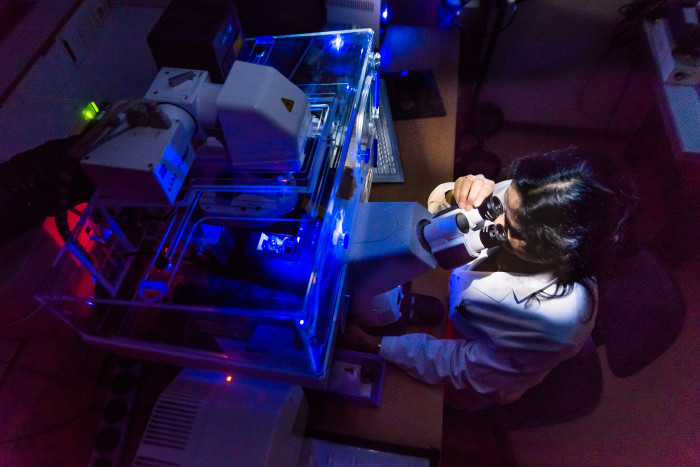Intelligent maps will help robots navigate in your home

Saeed Gholami Shahbandi, PhD student at the School of Information Technology, presented his thesis on June 14, 2018. Halmstad University
”In a workspace where robots and humans operate side by side, it is important that the robots are ’well-behaved’ and aware of their surroundings. Semantic maps are one means of providing this enhanced understanding to the robot”, says PhD student Saeed Gholami Shahbandi at the School of Information Technology at Halmstad University.
Saeed Gholami Shahbandi will defend his PhD thesis on the subject on June 14. In his research, Saeed Gholami Shahbandi proposes map interpretation techniques through modelling and semantic annotation, in an attempt to enrich the final robotic map.
”Robotic mapping is a well-advanced field of research, relying and benefiting from a lot of different improvements in robotics, machine learning and computer vision. Such a rich discipline of research has made it possible to develop methods that can handle challenging environments such as warehouses, office buildings or homes.”
”I look forward to seeing this line of research improve human quality of life further and that robots will be accessible for everyone in their everyday life. I hope I will have the privilege to extend my contribution in this field”, says Saeed Gholami Shahbandi.
Read more on Halmstad University web.
Thesis: Interpretation and Alignment of 2D Indoor Maps: Towards a Heterogeneous Map Representation
Contact
Webb: saeed.im
E-mail: saeed.gholami_shahbandi@hh.se
Media Contact
More Information:
http://www.vr.seAll latest news from the category: Information Technology
Here you can find a summary of innovations in the fields of information and data processing and up-to-date developments on IT equipment and hardware.
This area covers topics such as IT services, IT architectures, IT management and telecommunications.
Newest articles

A universal framework for spatial biology
SpatialData is a freely accessible tool to unify and integrate data from different omics technologies accounting for spatial information, which can provide holistic insights into health and disease. Biological processes…

How complex biological processes arise
A $20 million grant from the U.S. National Science Foundation (NSF) will support the establishment and operation of the National Synthesis Center for Emergence in the Molecular and Cellular Sciences (NCEMS) at…

Airborne single-photon lidar system achieves high-resolution 3D imaging
Compact, low-power system opens doors for photon-efficient drone and satellite-based environmental monitoring and mapping. Researchers have developed a compact and lightweight single-photon airborne lidar system that can acquire high-resolution 3D…





















